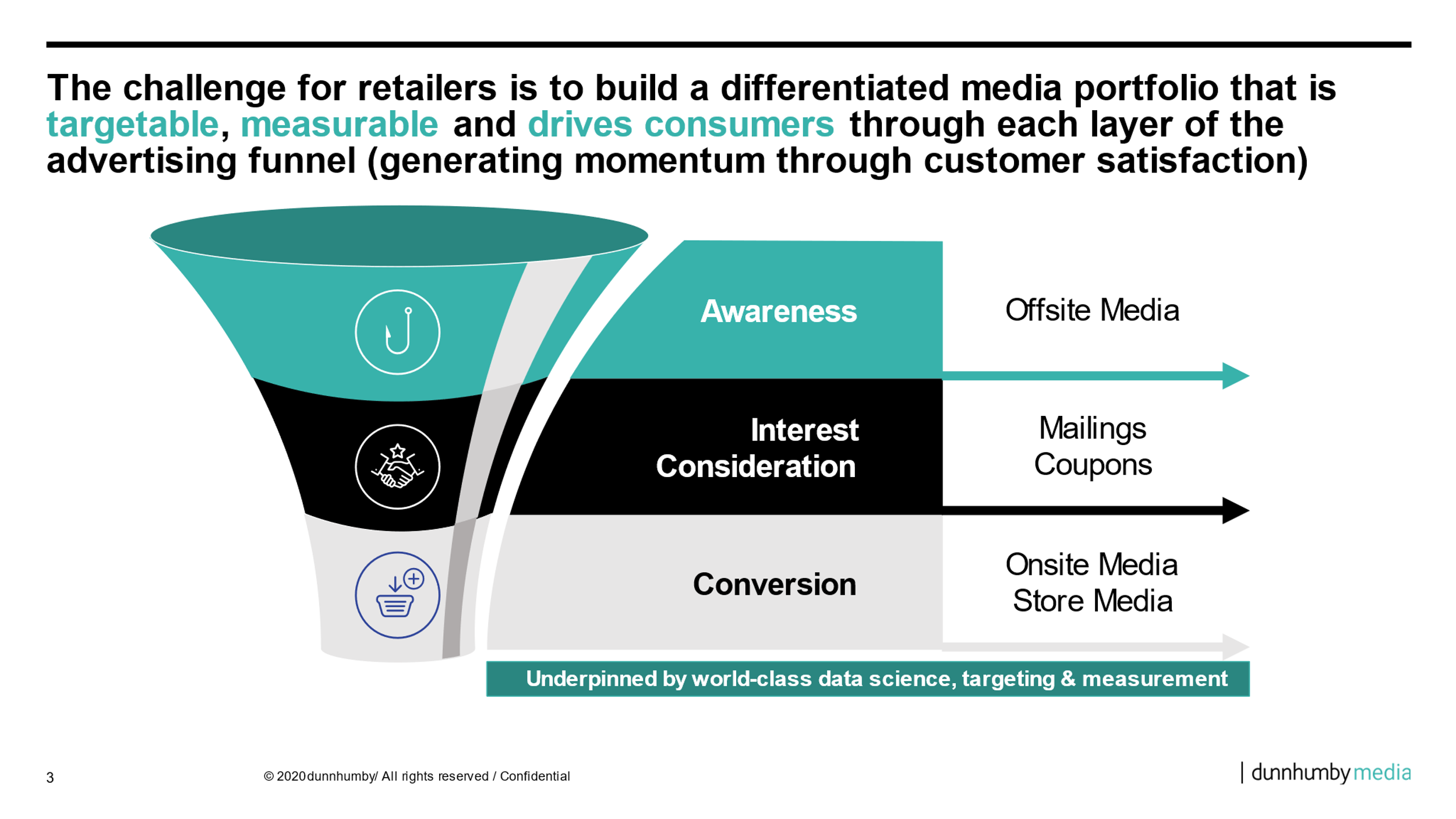The power of personalisation for suppliers
Data-driven personalisation can be a challenging subject for suppliers. Disintermediated as they are from their end customers – the emergence of direct-to-consumer distribution models notwithstanding – it can be difficult for brands to communicate with the kind of timeliness and relevance needed to deliver personalisation at the level that many shoppers have now come to expect.
Even a cursory look at the difference between brands and retailers is enough to understand why. While brands outspend any other industry when it comes to advertising, for instance, the average supplier customer database is far smaller than that of their retailer partners – almost 90% so according to one recent study[1].
With that thought in mind, it’s little wonder that most brands invest significant amounts of time, money, and effort into improving their understanding of grocery shoppers. Whether it’s creative testing to find out which ads resonate best through to concept testing as part of new product development, many brands use deep audience research and focus groups to introduce some scientific rigour to their operations.
Unfortunately, this best practice approach isn’t always applied across the board – media and advertising providing a clear example of how things can fall down. The same scrutiny that suppliers apply to things like NPD doesn’t always make it through to their media activities, notably in terms of execution. As a result, rather than using targeted and direct communications channels, many still fall back heavily on mass media channels like TV.
While New Zealand’s advertisers spent around $1.8bn on digital channels in 2022, for instance, they also invested a similar amount into untargeted media across the same period. $517m was spent on TV advertising, $266m on radio, $216m on newspapers, and $183m on out-of-home[2]. While this isn’t a problem per se – these channels are capable of delivering great results, of course – it does speak to a missed opportunity around personalisation.
Why? Well, firstly, companies that excel at personalisation generate 40% more revenue from those activities than other businesses do. Secondly, from a shopper perspective, personalisation is fast becoming the standard; 71% of consumers say that they expect personalised communications from brands and businesses, with 76% admitting to being frustrated when that requirement goes unfulfilled[3].
A third point of concern also exists here, and that’s the fact that untargeted mass media campaigns don’t support the increasingly complex marketing objectives that suppliers have. They may be great for raising awareness, building the brand, and generating conversation, but broad-brush ad campaigns are unlikely to have a comparable impact on churn reduction or category growth.
So, where does personalisation fit into this situation? When we look at the traditional marketing funnel, it can be tempting to assume that there’s really only room for personalisation at the very bottom of that model – the point of conversion. The truth is actually very different, demonstrably so when we look at the potential of personalisation within retail media specifically.

Personalisation isn’t only relevant at the thin end of the funnel
At dunnhumby, we tend to think about retail media in terms of a cohesive “sofa-to-store” journey. Touchpoints along that journey include everything from offsite media like independent websites and social channels through to coupons issued at the till. The power of retail media is such that, so long as the correct data science framework is in place, personalised engagement opportunities exist across that entire spectrum.

A visual representation of the sofa-to-store journey
Take social media ads, for example. Science-based campaigns that target audiences by their propensity to purchase can deliver dramatic improvements to advertising effectiveness, helping to raise awareness amongst shoppers before they even set foot in a store. Similarly, a personalised coupon sent by email can considerably improve purchase intent and consideration, especially when mailed at the right time in a customer’s purchasing cycle.
Onsite media, with its many possibilities around recommendations, suggestions, and reminders, offers a multitude of opportunities to engage with shoppers on an individual basis. With sufficient planning, these can be used to address specific goals – attracting buyers from competitor brands, for instance, or convincing existing buyers to trade up to a larger or premium version of a product.
Utilised in this way, personalisation promises a wide range of benefits to suppliers:
- Better return on investment
When they personalise their advertising around distinct, high-propensity audiences, suppliers have a better chance of turning interest into intent. That results in better, more cost-effective marketing and minimises the risk of wasting spend on uninterested shoppers.
- More engaged customers
80% of consumers are more likely to make a purchase when receiving a personalised experience[4]. Personalisation helps to build closer relationships with shoppers, boosting loyalty and maximising the long term commercial opportunity for brands.
- Smarter positioning
As noted above, the expansive and nuanced shopper journey of today offers multiple engagement opportunities. By personalising their marketing, brands can ensure they’re positioned effectively throughout, and remain front of mind when purchasing decisions are being made.
- Faster optimisation of onsite media campaigns
“Onsite media” involves the use of a retailer’s ecommerce inventory like websites and apps. Because they focus on specific individuals, personalised onsite campaigns tend to give very early indications of success and failure. With the right level of agility, personalisation allows brands to modify and improve their onsite media activities in near real-time – evaluating performance and pulling different levers to boost success.
As valuable as it can be, personalisation can also be a complex endeavour – particularly for grocery suppliers, which operate at unparalleled scale compared to most other industries. Advanced science and analytics are required, both for setting objectives and in support of the one-to-one targeting that true personalisation demands.
Nonetheless, with the right approach – and the right partner alongside them – brands have much to gain from the power of personalisation.
[1] Maximizing the Value of Data for CPG Marketers – BCG, 27th August 2020
[2] Advertising Turnover Report – Advertising Standards Authority, March 2023
[3] The value of getting personalization right—or wrong—is multiplying – McKinsey, 12th November 2021
[4] New Epsilon research indicates 80% of consumers are more likely to make a purchase when brands offer personalized experiences – Epsilon, 9th January 2018
TOPICS
The latest insights from our experts around the world
Navigating a shifting world: the headline results from our latest Consumer Pulse
Keeping it relevant and authentic: engaging consumers along the purchase journey



